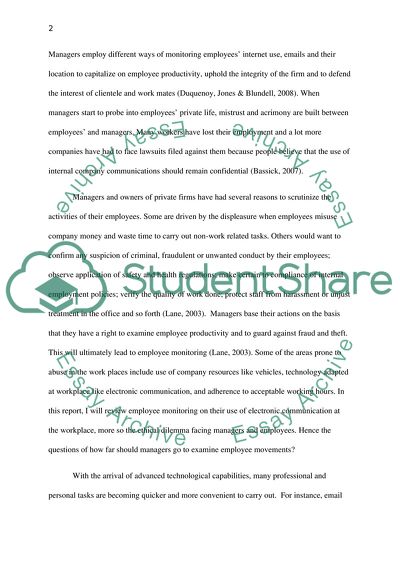Cite this document
(“The Movements of Employees at Work Abstract Essay”, n.d.)
The Movements of Employees at Work Abstract Essay. Retrieved from https://studentshare.org/human-resources/1772996-topic-should-there-be-limits-to-how-managers-and-owners-of-private-firms-examine-the-movements-of-their-employees
The Movements of Employees at Work Abstract Essay. Retrieved from https://studentshare.org/human-resources/1772996-topic-should-there-be-limits-to-how-managers-and-owners-of-private-firms-examine-the-movements-of-their-employees
(The Movements of Employees at Work Abstract Essay)
The Movements of Employees at Work Abstract Essay. https://studentshare.org/human-resources/1772996-topic-should-there-be-limits-to-how-managers-and-owners-of-private-firms-examine-the-movements-of-their-employees.
The Movements of Employees at Work Abstract Essay. https://studentshare.org/human-resources/1772996-topic-should-there-be-limits-to-how-managers-and-owners-of-private-firms-examine-the-movements-of-their-employees.
“The Movements of Employees at Work Abstract Essay”, n.d. https://studentshare.org/human-resources/1772996-topic-should-there-be-limits-to-how-managers-and-owners-of-private-firms-examine-the-movements-of-their-employees.


